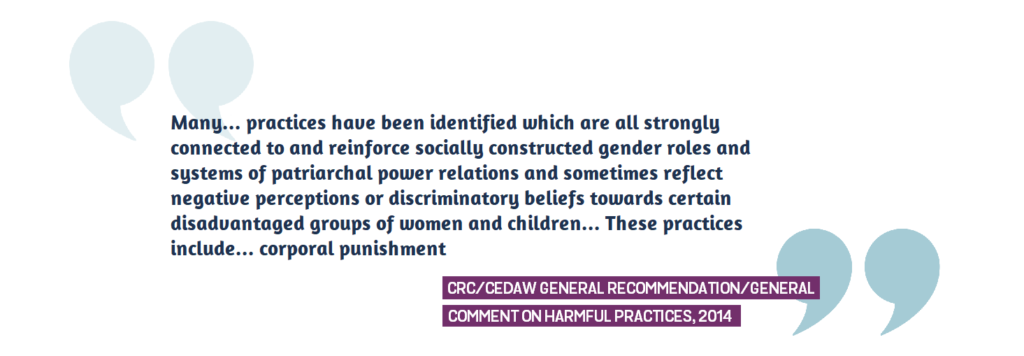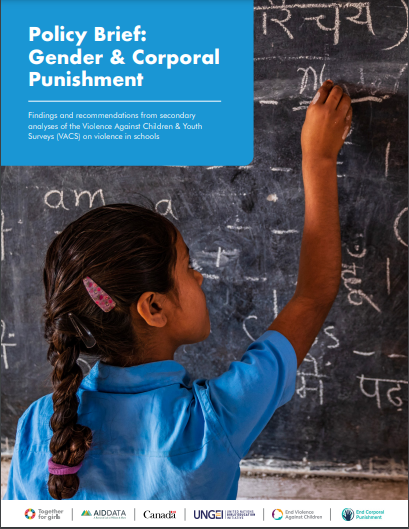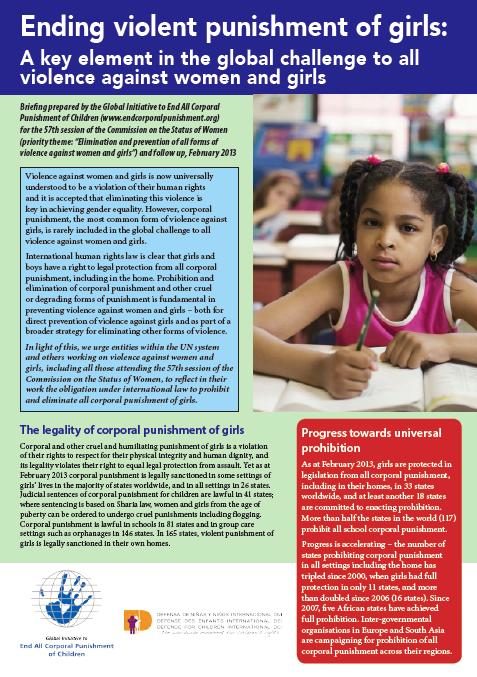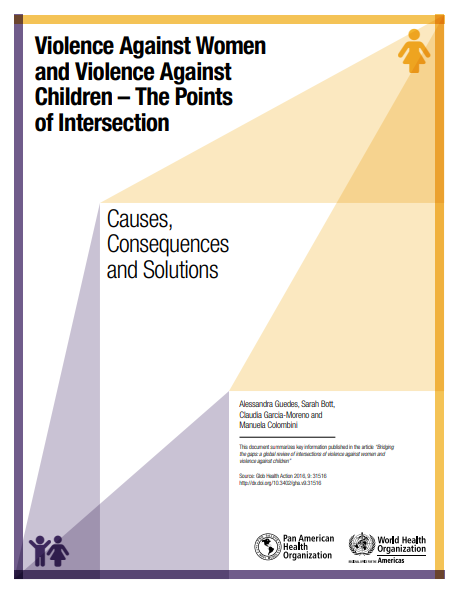Girls and gender
Violence against women and girls is universally recognised as a violation of their human rights, but corporal punishment - the most common form of violence which affects girls in all regions of the world - is often overlooked. Corporal punishment violates girls’ right to respect for their physical integrity and human dignity, and its legality denies them the same legal protection from assault as adults.
Girls and boys across the world grow up being hit and hurt in the name of ‘discipline’ but this experience is often gendered as girls may suffer different types of punishment or be punished for different reasons. Corporal punishment can be used to control girls’ social and sexual behaviour, to encourage deference, submission and timidity, or to reinforce traditional ideas of what it means to be a woman.

Corporal punishment is closely linked to intimate partner violence. The two kinds of violence often coexist and may be perpetrated by the same person. Children in homes where domestic violence occurs are more likely to experience corporal punishment, and it increases their risk of experiencing domestic violence later in life, either as a victim or perpetrator.
Corporal punishment in schools also impedes girls’ right to education. For too many girls, it is the beginning of a life of violent victimisation by authority figures and family members. Prohibiting corporal punishment is therefore essential in preventing violence against women and girls – both directly and as part of a broader strategy for eliminating other forms of violence.

News and features
Human rights
The Beijing Declaration and Platform for Action provides a global blueprint to advance women's rights and includes a commitment to end all violence against women and girls.
The Convention on the Elimination of All Forms of Discrimination Against Women (CEDAW) puts an obligation on states to take measures to elimnate discrimination against women.
The Convention on the Rights of the Child (CRC) guarantees all children the right to live free from corporal punishment.
Find out more about all international and regional human rights standards as they relate to corporal punishment.






